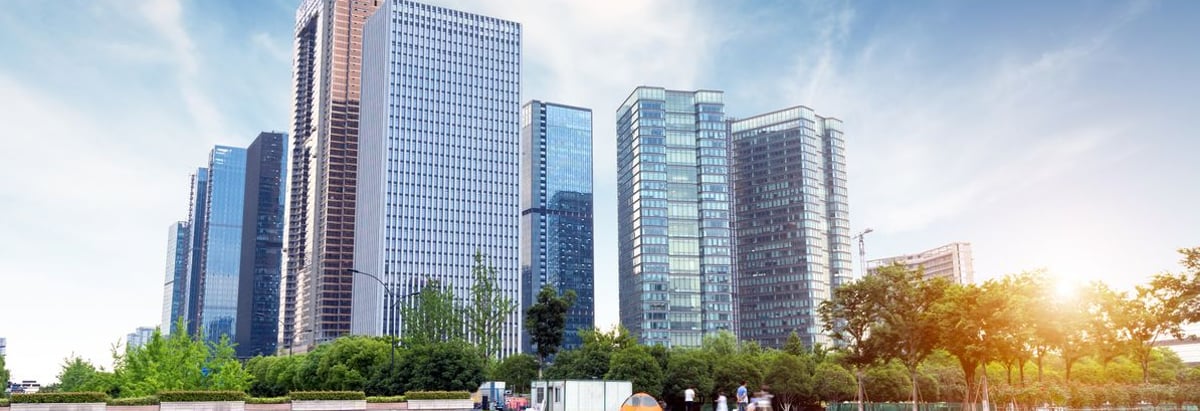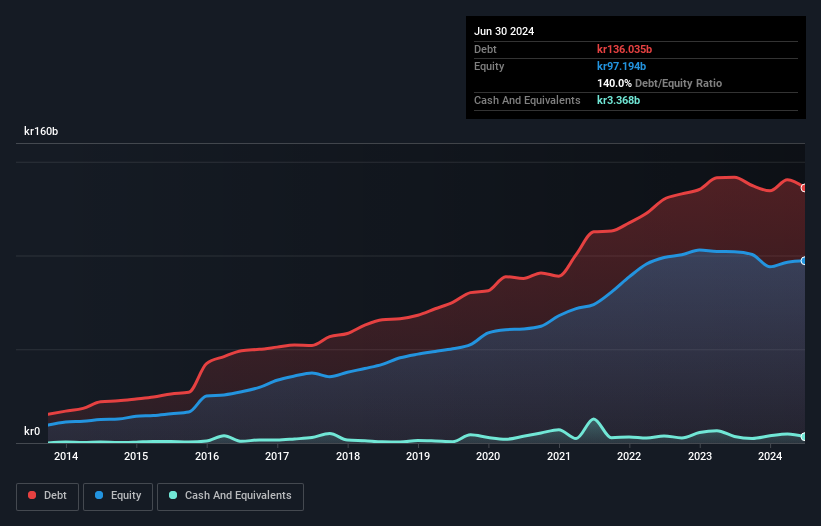
Howard Marks put it nicely when he said that, rather than worrying about share price volatility, 'The possibility of permanent loss is the risk I worry about... and every practical investor I know worries about.' When we think about how risky a company is, we always like to look at its use of debt, since debt overload can lead to ruin. We note that Fastighets AB Balder (publ) (STO:BALD B) does have debt on its balance sheet. But the more important question is: how much risk is that debt creating?
What Risk Does Debt Bring?
Debt assists a business until the business has trouble paying it off, either with new capital or with free cash flow. Ultimately, if the company can't fulfill its legal obligations to repay debt, shareholders could walk away with nothing. However, a more usual (but still expensive) situation is where a company must dilute shareholders at a cheap share price simply to get debt under control. Of course, plenty of companies use debt to fund growth, without any negative consequences. When we think about a company's use of debt, we first look at cash and debt together.
Check out our latest analysis for Fastighets AB Balder
How Much Debt Does Fastighets AB Balder Carry?
As you can see below, Fastighets AB Balder had kr136.0b of debt, at June 2024, which is about the same as the year before. You can click the chart for greater detail. However, it does have kr3.37b in cash offsetting this, leading to net debt of about kr132.7b.

How Strong Is Fastighets AB Balder's Balance Sheet?
We can see from the most recent balance sheet that Fastighets AB Balder had liabilities of kr33.2b falling due within a year, and liabilities of kr128.3b due beyond that. On the other hand, it had cash of kr3.37b and kr4.73b worth of receivables due within a year. So its liabilities total kr153.5b more than the combination of its cash and short-term receivables.
This deficit casts a shadow over the kr96.5b company, like a colossus towering over mere mortals. So we'd watch its balance sheet closely, without a doubt. After all, Fastighets AB Balder would likely require a major re-capitalisation if it had to pay its creditors today.
In order to size up a company's debt relative to its earnings, we calculate its net debt divided by its earnings before interest, tax, depreciation, and amortization (EBITDA) and its earnings before interest and tax (EBIT) divided by its interest expense (its interest cover). This way, we consider both the absolute quantum of the debt, as well as the interest rates paid on it.
Weak interest cover of 1.8 times and a disturbingly high net debt to EBITDA ratio of 16.0 hit our confidence in Fastighets AB Balder like a one-two punch to the gut. The debt burden here is substantial. However, one redeeming factor is that Fastighets AB Balder grew its EBIT at 12% over the last 12 months, boosting its ability to handle its debt. When analysing debt levels, the balance sheet is the obvious place to start. But it is future earnings, more than anything, that will determine Fastighets AB Balder's ability to maintain a healthy balance sheet going forward. So if you're focused on the future you can check out this free report showing analyst profit forecasts.
But our final consideration is also important, because a company cannot pay debt with paper profits; it needs cold hard cash. So we clearly need to look at whether that EBIT is leading to corresponding free cash flow. During the last three years, Fastighets AB Balder produced sturdy free cash flow equating to 65% of its EBIT, about what we'd expect. This free cash flow puts the company in a good position to pay down debt, when appropriate.
Our View
To be frank both Fastighets AB Balder's level of total liabilities and its track record of managing its debt, based on its EBITDA, make us rather uncomfortable with its debt levels. But on the bright side, its conversion of EBIT to free cash flow is a good sign, and makes us more optimistic. Overall, we think it's fair to say that Fastighets AB Balder has enough debt that there are some real risks around the balance sheet. If all goes well, that should boost returns, but on the flip side, the risk of permanent capital loss is elevated by the debt. There's no doubt that we learn most about debt from the balance sheet. But ultimately, every company can contain risks that exist outside of the balance sheet. Be aware that Fastighets AB Balder is showing 1 warning sign in our investment analysis , you should know about...
At the end of the day, it's often better to focus on companies that are free from net debt. You can access our special list of such companies (all with a track record of profit growth). It's free.
New: AI Stock Screener & Alerts
Our new AI Stock Screener scans the market every day to uncover opportunities.
• Dividend Powerhouses (3%+ Yield)
• Undervalued Small Caps with Insider Buying
• High growth Tech and AI Companies
Or build your own from over 50 metrics.
Have feedback on this article? Concerned about the content? Get in touch with us directly. Alternatively, email editorial-team (at) simplywallst.com.
This article by Simply Wall St is general in nature. We provide commentary based on historical data and analyst forecasts only using an unbiased methodology and our articles are not intended to be financial advice. It does not constitute a recommendation to buy or sell any stock, and does not take account of your objectives, or your financial situation. We aim to bring you long-term focused analysis driven by fundamental data. Note that our analysis may not factor in the latest price-sensitive company announcements or qualitative material. Simply Wall St has no position in any stocks mentioned.
About OM:BALD B
Fastighets AB Balder
Develops, owns, leases, and manages residential and commercial properties in Sweden, Denmark, Finland, Norway, Germany, and the United Kingdom.
Fair value with imperfect balance sheet.
Similar Companies
Market Insights
Community Narratives




